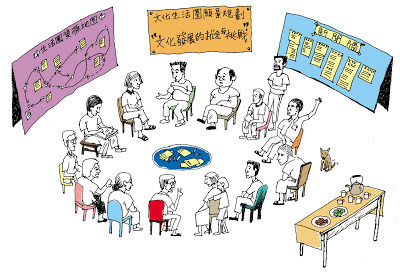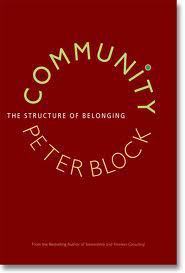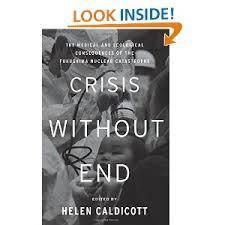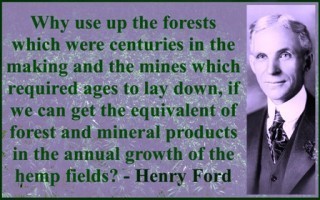Stuart Jeanne Bramhall's Blog: The Most Revolutionary Act , page 1352
October 16, 2014
Big task ahead, as Canada’s nuclear industry must try to protect 100s of thousands of citizens against radiation
All Canadian citizens living or working 8-16 kilometers of a nuclear power plant are to receive a stock of potassium iodide pills (by Dec 2015) to protect them from thyroid cancer. Wouldn’t it be nice if the Obama administration showed the same concern about Americans’ welfare?
 Originally posted on nuclear-news:
Originally posted on nuclear-news:
 Radiation protection pills delivered by end of 2015, Star.com New rules from the Canadian Nuclear Safety
Radiation protection pills delivered by end of 2015, Star.com New rules from the Canadian Nuclear Safety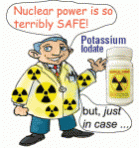 Commission dictate that iodine thyroid-blocking pills must be delivered to homes and workplaces near nuclear plants by the end of next year. By: John Spears Business reporter, Oct 14 2014
Commission dictate that iodine thyroid-blocking pills must be delivered to homes and workplaces near nuclear plants by the end of next year. By: John Spears Business reporter, Oct 14 2014
People living and working within 8 to 16 kilometres of a nuclear power plant should have radiation protection pills in their hands by the end of 2015, under new federal regulations.
But Durham’s Medical Officer of Health says it will be “very tight – extremely tight” to meet the deadline.New rules from the Canadian Nuclear Safety Commission dictate that iodine thyroid-blocking pills must be delivered to homes and workplaces near nuclear plants by the end of next year.
The pills, often known as potassium iodide pills or KI pills, inhibit the thyroid gland from absorbing radiation.Nuclear plant operators must pay the cost of buying…
View original 302 more words


October 15, 2014
The Illusion of Technique
Community: The Structure of Belonging
By Peter Brock
Berret-Koehler Publishers, Inc (2008)
Book Review – Part II
By focusing on six essential “conversations,”* Brock is extremely prescriptive in his approach to forming groups. He seems to believe this artificial structure is necessary to keep the group from replicating patriarchal patterns in broader society. Based on 33+ years of grassroots organizing, I disagree. Provided they are properly facilitated, I have a lot of confidence in the ability of small groups to evolve spontaneously without replicating what happens in a corporate boardroom. I’m also extremely fed up with liberal academics and their obsession with technique.
In my mind, the artificial structure Brock imposes is counterproductive. Despite claiming to erase artificial distinctions between group leaders and members, he does the exact opposite. He gives group leaders immense power by setting up an expectation they will pose questions and members will answer them. I also see a risk – given the intrusive nature of the questions – that the community group will become a therapy group.
He justifies the need for a “possibility conversation” to prevent groups from focusing on about problems and complaints – which he feels causes them to behave like corporate boards and start setting up visions, goals and targets. Based on 30+ years of organizing of experience, I can guarantee this behavior isn’t automatic – not if there are working class people in the room.
He argues that the “ownership conversation” is designed to keep the group conversation focused inside the room. He maintains too many community groups focus on issues and people outside the room, which he claims are beyond beyond their control.
Again I strongly disagree. Most of the community groups I’ve worked with have (very successfully) focused on external problems, such as blocking the construction of an LNG (liquid national gas) terminal at Port Taranaki and forcing our local council to remove the fluoride from our drinking water. As far as I’m concerned, Brock’s “ownership conversation” is just a new twist on neoconservative ideological propaganda linking “rights” with “responsibilities” and “freedom” with “accountability.” In my view, the only way to win rights and freedom is by fighting for them – all the media hype linking rights and freedom to responsibility and accountability is designed to conceal this reality.
Personally, I much prefer Open Space Technology (OST), an older more established approach to creating self-organized groups. In OST, the facilitator’s role is strictly limited to a type of facilitation in which they “hold a space” for participants to self-organize, rather than managing or directing the conversations.**
I have to give Brock credit for using the “dissent conversation” to circumvent the strong tendency of self-organized groups to punish dissent. Despite some strong reservations about the intrusive nature of some of the questions, I feel the “dissent conversation” is the most valuable aspect of his approach. This has always been one of the main drawback of OST: its tendency to reward consensus and punish dissent.
*Brock’s six conversations include the “invitation” and the possibility, ownership, dissent, commitment and gift conversations. Each of the five conversations is presented as a series of questions.
1. The invitation names the possibility (eg The Possibility of a Safe Cincinnati) which is the reason for convening the group. It deliberately refrains from advocating for a particular issue or viewpoint and tries to bring people into the same room that don’t normally associate together.
2. The possibility conversation asks the following questions
What is the crossroads where you find yourself at this stage of your life or work or in the project around which we are assembled?
What declaration of possibility can you make that has the power to transform the community and inspire you?
3. The ownership conversation asks:
•How valuable an experience (or project or community) do you plan for this to be?
How much risk are you willing to take?
How much do you plan to participate?
To what extent are you invested of the well-being of the whole?
What I have I done to contribute to the very thing I complain about or want to change.
What is the story about this community or organization that you hear yourself telling the most often?
What are the payoffs you receive from holding on to this story?
What is your attachment to this story costing you?
4. The dissent conversation asks
What doubts and reservations do you have?
What is the no or refusal that you keep postponing
What have you said yes to that you no longer mean?
What resentment do you hold that no one knows about?
What forgiveness are you withholding?
5. The commitment conversation asks
What promises am I willing to make?
What measures have meaning to me?
What price am I willing to pay?
What is the cost to others for me to keep my commitments or to fail in my commitments?
What is the promise I’m willing to make that constitutes a risk or major shift for me?
6. The gift conversation asks:
What is the gift you still hold back?
What is something about you that no one knows?
What gratitude do you hold that has gone unexpressed?
What have others in this room done, in this gathering, that has touched you.
**OST is similar to Brock’s approach in that 1) it starts with a broad, open invitation articulating the purpose of the meeting 2) participants sit in a circle and 3) it places heavy emphasis on small group work. However in OST members set the agenda themselves by proposing a bulletin board of issues and moving into small groups to develop these issues through further discussion.
photo credit: Askavusa Open Space Technology (follow link to learn more about OST)


October 13, 2014
How Communities Awaken
Community: The Structure of Belonging
By Peter Brock
Berret-Koehler Publishers, Inc (2008)
Book Review - Part I
“How Communities Awaken” is the title of a master class I’m taking through a local Maori social services agency. Our main textbook is Peter Brock’s Community: The Structure of Belonging. We meet every two weeks to do small group work around six “conversations” Brock prescribes as essential to transforming fragmented communities.
Peter Brock is one of a growing number of community strategists dedicated to reducing alienation and apathy by getting people more involved in their communities. In Community: the Structure of Belonging, he maintains that 1) our collective loss of power in contemporary society is a direct result of the breakdown of our communities, 2) the only way to regain this power is to restore citizen engagement in community life and 3) most groups and agencies designed to relive “political suffering” (i.e. poverty, inequality, unemployment and the multiple crises involving housing, education transportation, drug abuse, binge drinking, family violence and at-risk youth) fail because they buy into the patriarchal consumer model imposed on us by wider society.
Brock asserts that the consumer society causes most people to see themselves as passive consumers rather than engaged citizens – that this causes them to see their political and community leaders as delivering a product, with their own role limited to critiquing the product. The purpose of this book is to lay out specific strategies to lift us out of our role as passive consumers of government.
While I partially agree with premises two and three, I totally disagree with premise one. I find to hard to ignore substantial evidence that Wall Street Banksters, the Koch brothers, the Walton family (who own WalMart) and other corporate players have colluded to deliberately strip us of this power. Brock makes absolutely no mention of this. In fact, he dismisses activists who complain about “external” causes of powerlessness as playing the “blame game,” which he describes as a “delightful escape from the unbearable burden of being accountable.”*
I‘m also concerned by his glaring omission of the role the corporate public relations industry plays in constantly bombarding us with fearful, competitive, individualistic and pro-consumption messaging (see The Science of Thought Control).
In my view, this constant barrage of propaganda and disinformation – and the pernicious passivity and apathy resulting from it – is the main obstacle we face to organizing against corporate fascism. That being said, I strongly agree with Brock’s view that the only way to overcome this passivity and apathy is by re-engaging in the community groups and activities – both political and non-political – that our parents and grandparents enjoyed.
I haven’t found New Zealand that much different than the US in this regard. Although there are huge advantages to not living in a military empire (see The Sacrifices of Empire), most New Zealanders seem to be trapped in the same cycle of consumption, debt and overwork. Like Americans, they are depressed, anxious, apathetic and disengaged from community life and the political process. Voluntarism has declined steeply, particularly among young people, and a growing number of Kiwis don’t vote.**
*Turnout remains much better here than in the US. In NZ 77% is considered a poor turnout. In the US 60% is considered a good turnout.
** Brock’s equally dismissive of organized protest and “speaking truth to power,” which he belittles as a “complaint session in evening clothes.” He adds, “Any time we act in reaction, even to evil, we are giving power to what we are in reaction to.” I can agree that it’s more effective to focus on building positive institutions than reacting to negative ones. However we are all trained, as part of our indoctrination, to blame ourselves if for our personal, social and financial failures. The only way I know to get people to quit blaming themselves for the misery they experience in corporate society is to demonstrate that their so-called “personal” problems have a social and political cause.
To be continued with a critique of the specific strategies Brock proposes.


October 11, 2014
Greening the South Bronx
Greening the Ghetto
Majora Carter (2006)
Film Review
I make no secret of my belief that real political change must start at the local. To bone up on my organizing skills, I’m presently doing a master class called “How Communities Awaken”. It’s been decades since I took a formal class. For homework they’ve given two books and a flash drive full of videos, podcasts and journal articles.
Naturally I went for the videos first. This one is a 2006 TED talk by an African American environmental justice* activist from the South Bronx.
The most striking part of Carter’s talk is her narrative describing how local politicians and developers deliberately target politically vulnerable communities. I saw the exact same thing happen to Seattle’s central area in the 1980s.
As in Seattle, major Interstate expansion (to shorten the Manhattan commute for wealthy Westchester County residents) displaced thousands (600,000) of South Bronx residents. The family homes many had purchased became virtually worthless.
In addition to the Interstate, South Bronx residents have been saddled with four power plants, a sewage treatment plant and a toxic waste site. Due air pollution, one in four South Bronx kids has asthma, seven times the national average.
Fighting Back Through Community Empowerment
Carter describes how she and her neighbors turned this around by obtaining a $10,000 grant to transform a desolate Hudson River dump site into a park. And how this success led to the formation of a Green Wave movement in South Bronx.
In addition to building community and greatly improving the physical environment, her Green the Ghetto movement has translated into serious economic development. In addition to offering job training for ecological stewardship, her community started New York’s first green roof** installation business.
The end of the film features an intriguing interaction (i.e. putdown) with Al Gore about his patronizing response when she approached him about addressing environmental justice in his climate change slideshows.
*Carter defines environmental justice as the right of a community not to be saddled with an undue burden of environmental problems.
**A green roof is a living roof partly or completely covered with vegetation, to optimize energy conservation and minimize water runoff.


October 10, 2014
Obama’s Unemployment Rate Is 5.9% ~ But 5.9% Of What?: 29% Of U.S. Labor Population Out Of Work And Out Of Labor Force!
Obama’s new math. US unemployment has supposedly dropped to 5.9%. While 29% of the workforce remains out of work and out of the labor force.
 Originally posted on Political Vel Craft:
Originally posted on Political Vel Craft:
While by now everyone should know the answer, for those curious why the US unemployment rate just slid once more to a meager 5.9%, the lowest print since the summer of 2008, the answer is the same one we have shown every month since 2010:
the collapse in the labor force participation rate, which in September slid from an already three decade low 62.8% to 62.7% – the lowest in over 36 years, matching the February 1978 lows.
View original 821 more words


October 9, 2014
Fukushima: the Cover-Up Continues
Dr Helen Caldicott’s new book, Crisis Without End: the Medical and Ecological Consequences of Fukushima, is a compilation of the symposium she organized at the New York Academy of Medicine in March 2013.* The latter was a virtual Who’s Who of nuclear physicists and radiation health experts. In the short video below, she gives a brief overview of the nuclear accident at Fukushima and the systematic cover-up by the US and Japanese government of the on-going threat it poses to all global inhabitants.
What Actually Happened at Fukushima?
Following a March 2011 earthquake and tsunami that knocked out their cooling systems, three nuclear reactors experienced core meltdowns. When a meltdown occurs, the core overheats to the point that it melts through the containment vessel into the grounds. Driven by the intense heat of continuous chain reactions, the molten mass continues to spew radiation into the environment over an extended period.
The mountain streams that flow under the stricken reactors absorb this radiation from the molten cores and carry it to the Pacific Ocean. Approximately four tons daily of radiation-contaminated water has been flowing into the Pacific Ocean for 3 ½ years.
One the radiation reaches the ocean, it’s taken up into the food chain where it’s “biomagnified” (i.e. small fish eat radioactive algae, which are eaten by larger fish). Tuna is at the top of the food chain. Which is why tuna caught off the coast of California contains radioactive cesium that originated at Fukushima.
The Cover-Up
The Japanese government knew almost immediately the meltdowns had occurred – expose the whole of Japan and the American West Coast to massive doses of airborne radioactive fallout – and covered it up for three months. They and Tepco, the private company running Fukushima, continue to mislead the public by asserting it will take forty years to stop the flow of radioactive water into the Pacific. According to Caldicott, no technology exists at present to reverse the effects of a nuclear meltdown.
A new law Japan passed in December 2013 makes it illegal for journalists to disclose any information about Fukushima that the government wishes to suppress.
Obama, the pro-nuclear president (he received a $250,000 campaign contribution from Exelon Corporation) colluded in the cover-up. Instead of warning Americans in Seattle, Florida and other US sites that they were being exposed to high levels of airborne radioactive fallout (specifically I 131), he specifically denied that the US faced any risk of radiation exposure.
Caldicott maintains the EPA has an absolute legal and moral obligation to monitor radiation levels of US air, water and sea food, especially as the Fukushima site remains extremely vulnerable to a future earthquake, tsunami or typhoon. Workers are still pumping seawater on the stricken reactors to cool them. Afterwards the radioactive seawater is stored in 1500 enormous storage tanks held together with adhesive tape.
Obama, in contrast, is far more concerned about protecting his friends in the nuclear industry. Amazingly he has just finalized $6.5 billion $6.5 billion in loan guarantees to build two new nuclear power plants in Georgia.
Hillary Clinton is also a major player in the cover-up, with the agreement she signed immediately after the Fukushima accident, for the US to continue to import Japanese seafood. Caldicott warns that under no circumstances should people anywhere eat rice, fish or miso imported Japan – owing to high levels of radiation it contains.
Chernobyl
Caldicot also discusses the 1986 nuclear meltdown at Chernobyl (Ukraine) which has caused one million, mainly cancer-related, deaths across Europe. Information about the effects of Chernobyl in other parts of Europe is also being suppressed. Lambs in Wales, Wild boards in Germany and Turkish hazelnut are still too dangerous to eat due to radiation contamination.
* Free link to presentations from last year’s Symposium available via the Helen Caldicott Foundation


October 7, 2014
The Nuclear Waste Scandal
Nightmare Nuclear Waste
(2009)
Film Review
In the face of growing international concern over the ongoing nuclear disaster at Fukushima, an excellent 2009 French/German film (with English subtitles) about nuclear waste has been re-released and is making the rounds of cyberspace. This is truly a life and death issue, owing to the research evidence linking high environmental radiation levels (from the 1986 Chernobyl meltdown) to a big spike in European cancer levels. Important facts come out in this film that the nuclear industry and government are doing their best to conceal:
1. The whole issue of nuclear waste is characterized by secrecy, cover-up, lies and deception by the nuclear industry and pro-nuclear governments (including the extremely pro-nuclear Obama administration).
2. As the world waits with baited breath for the nuclear industry to come up with a permanent solution for deadly waste that will take 100,000 years to decontaminate, massive amounts have been dumped in the ocean, released to the air or stored in leaky containers that are contaminating groundwater and rivers. In La Hague France a nuclear energy company called Areva is releasing it into the air and into the English Channel through a drain pipe d water or open air storage pools. In La Hague France a nuclear energy company is releasing it into the English Channel through a drain pipe (as of 2009, when this film was made).
3. The US and Russian government are covering up the devastating health impacts of the world’s two most contaminated nuclear sites: the Hanford nuclear reservation in Eastern Washington and the Chelyabinsk region in the former Soviet Union. The latter experienced massive contamination when a nuclear waste dump at the Mayak nuclear facility exploded in 1957. The very first nuclear disaster in history was covered up by both the Soviets and, at the behest of America’s fledgling nuclear power industry, the CIA
4. There has never been full disclosure about the 100,000 tons of nuclear waste dumped into the ocean prior to 1993 (as the film was made in 2009, this number excludes the four tons daily dumped into the Pacific Ocean at Fukushima), when the practice was banned by international treaty. Nor has there been any effort to investigate where these radionucleotides ended up or whether they have contaminated the food chain.
4. The nuclear industry – and government – are willfully ignoring the “no threshold model” doctors use to evaluate cumulative radiation risk when they assure us that occasional releases from nuclear power plants are no more harmful than a “transatlantic jet flight” (due to higher radiation levels in the outer atmosphere) Under this model every exposure – no matter how small – increases your risk of developing cancer or having children with birth defects.
The Nuclear Nightmare at Hanford
As a former Washington resident, I took particular interest in the segment on Hanford, the desert site where the Manhattan Project secretly produced plutonium for the atom bomb dropped on Nagasaki. Hanford also produced the vast majority of plutonium for America’s cold war arsenal (1950-1980). Most of Hanford’s nuclear waste is stored in 170 temporary underground concrete tanks. These were meant to be temporary until a permanent storage solution could be found. Beginning in 2001 the tanks, which were only built to last twenty years, were found to be leaking radionuclotides into the groundwater adjacent to the Columbia River.
According to the US Department of Energy, which is responsible for the Hanford clean-up, there are no nuclear contaminants in the Columbia River. This is virtually impossible for independent scientists to verify, as anyone trespassing on the Hanford reservation is subject to arrest and prosecution. The filmmakers accompanied an activist who entered the reservation secretly to take soil and water samples. French scientists at CRIIRAD (Commission de Recherche et d’Information Indépendantes sur la Radioactivité) who tested them found high levels of tritium (exceeding the drinking water standard), Iodine 129, Technetium 99 and Europium 152. The film also talks about an independent study local activists did in 2002, in which the majority of Columbia River fish they sampled contained high levels of Strontium 90.
The People in Muslimovo Who Are Waiting to Die
The situation of Russian farmers living adjacent to the Techa River in Chelyabinsk is far more tragic. After more than fifty years the Techa, which locals rely on to water their crops and pastures, remains contaminated with high levels of Cesium 137, tritium, Strontium 90 and Plutonium 239 and 240 – as do vegetables and milk produced in nearby farms.
The residents are all fully aware of the bleak future they face, as they watch family, neighbors and even their children and grandchildren succumb to cancer. Each family has been offered 20,000 Euros (about $25,000) to abandon their land and homes and voluntarily relocate. This is a paltry sum that would support them a few months at most. The government also tells them not to eat locally grown food. However with incomes averaging 80 euros a month, eating food trucked in from other regions is an unaffordable luxury. As one local woman states, “We have no choice but to stay here until we die.”


October 6, 2014
The Politics of Hemp
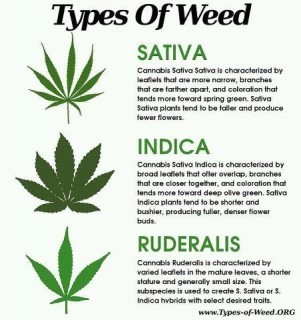
The farm bill Obama signed in February 2014 included an amendment to legalize industrial hemp production for research purposes. The amendment allows State Agriculture Departments, colleges and universities to grow hemp (defined as the non-drug oilseed and fiber varieties of Cannabis) for academic or agricultural research purposes. However it only applies only to states where industrial hemp farming is already legal under state law.
As of September 15, 2014, nineteen states had passed laws to provide for hemp pilot studies and/or for production as described by the Farm Bill stipulations.
Six states (Colorado, Oregon, Washington, Vermont, Tennessee and South Carolina) have gone even further, with legislation nullifying the longstanding federal ban on hemp cultivation. All six states allow farmers to produce hemp for the commercial market. A year ago, the Obama Justice Department quietly signaled that they wouldn’t prosecute marijuana use in states that had legalized the drug for recreational and/or medical use. Thus far the same hands-off policy seems to apply to states that have legalized hemp production.
The Fiber Modern Synthetics Replaced
Hemp cultivation is big business. Even though it hasn’t been grown in the United States for decades, America is one of the fastest-growing hemp markets. In 2011, the U.S. imported $11.5 million worth of legal hemp products (mainly from China), up from $1.4 million in 2000. With the recent anti-smoking movement and declining tobacco exports, hemp is high on the list replacement crops for tobacco farmers.
Industrial hemp is one of the most versatile plants known to man. Hemp fiber is used in the production of paper, textiles, rope, sails, clothing, plastics, insulation, dry wall, fiber board and other construction materials; while hempseed oil is used as a lubricant and base for paints and varnishes, as well as in cooking and beauty products.
Hemp: Proven Alternative to Petroleum-Based Synthetics
Hemp-based paper, textiles, rope, construction materials and plastics are the tried and true low tech alternative to modern synthetics that consume large quantities of fossil fuel during manufacture. Prior to the industrial revolution, the vast majority of textiles, clothing, canvas (the Dutch word for cannabis), rope and paper was made of hemp.
Before the invention of the cotton gin in the 1820s, 80% of the world’s textiles, fabrics, and clothing were made of hemp. During the nineteenth century, hemp was the main ingredient of 75% of the world’s paper. Until the US government passed a crippling hemp tax in 1937, most bank notes and archival papers were made of hemp (owing to its greater durability) and most paints and varnishes were made from hemp seed oil.
The Conspiracy to Kill Hemp
Hemp first began losing ground in 1850 to cheaper substitutes made of cotton, jute and sisal. Prior to 1917, hemp had to be processed by hand, involving huge labor costs incompatible with mass commercial production. After George W Schlicten automated hemp processing in 1917 with a new machine called the hemp decorticator, Henry Ford set up the first biomass fuel production plant in Iron Mountain Michigan. His intention was to run his Model T on hemp-based ethanol.
All this was happening at the precise moment that the munitions company DuPont was patenting synthetic fibers (nylon, rayon, Dacron, etc) and plastics derived from petroleum. Hemp posed a major threat to DuPont’s ability to market these synthetic fibers for fabrics, rope and other products because hemp was so cheap and readily available. The chemical giant also had a commercial interest in replacing hemp-based paper with paper produced from wood chips (they held the patent on the sulfates and sulfites used to produce paper pulp) and in replacing ethanol with gasoline as the major fuel source in automobiles (they held the patent on tetraethyl lead, which allowed gasoline to burn more smoothly in the internal combustion engine Ford designed to run on ethanol).
The main co-conspirators in the plot to kill hemp included DuPont, William Randolph Hearst (who owned a logging company and a paper manufacturing plant) and Andrew Mellon, president of Mellon Bank and DuPont’s major financier.
In 1930, Mellon, as US Secretary of the Treasury, created the Federal Bureau of Narcotics and appointed his nephew Henry Anslinger to run it. Between 1935 and 1937, Anslinger and a handful of DuPont’s cronies in Congress secretly wrote a bill to tax hemp production.
Meanwhile Anslinger and Hearst orchestrated a massive media campaign demonizing a dangerous new drug called marihuana that supposedly turned Mexicans and black jazz musicians into crazed killers. Anslinger and his cronies rushed through the Marihuana Tax Act of 1937 on a Friday afternoon before any lawmakers had a chance to read it. Only a handful realized the crippling effect the new law, which would also tax hemp, would have on the hemp industry.
In 1970 the 1937 Marihuana Tax Act was declared unconstitutional and replaced with the Controlled Substances Act. The latter official equated hemp with the drug marijuana (even though they come from very different plants*) and enacted an official prohibition against hemp cultivation.
*Industrial hemp (Cannabis sativa, variety sativa) is a tall, skinny plant with few major branches below the primary branches at the top. It has seven long thin leaflets and is grown in rows a foot apart. It produces good quality fiber and has a tetrahydrocannabinol (THC) concentration of 1% or less. Marijuana plants (Cannabis sativa, variety indica), in contrast, are short and bushy and must be spaced six feet apart for optimum growth. They have five leaflets, with three of them nearly twice the width of hemp leaflets. They produce negligible usable fiber and have a THC concentration of 4-20%. See image above.
photo credit: arbyreed via photopin cc
Also posted at Veterans Today


October 5, 2014
African Americans are arrested more despite selling, using drugs at lower rates
Contrary to the bullshit stereotypes promoted by the corporate media, according to the Brooking’s Institute, African Americans sell and use drugs less but have a much higher arrest rate.
The truth is that mass incarceration of African Americans has nothing to do with reducing crime – its principal aim is to control and marginalize black people.
 Originally posted on Politics and Hip Hop:
Originally posted on Politics and Hip Hop:


October 4, 2014
US Role in Egypt, Ukraine, and Now Hong Kong Mass Protests*
Looks like Hong Kong’s Occupation Central is just another CIA-sponsored “color” revolution – just like Egypt, Ukraine, Serbia and a half dozen others. And we all know where “color” revolutions end – by installing US-friendly puppet governments.
 Originally posted on Hwaairfan's Blog:
Originally posted on Hwaairfan's Blog:
US Role in Egypt, Ukraine, and Now Hong Kong Mass Protests*
Note, another BRIC country being destabilized/usurped…

By Tony Cartalucci
This article documents a US role in helping to build and direct the Occupy Central protests in Hong Kong. The US has become increasingly sophisticated in helping to build “democracy” movements in countries where the US is in conflict. Through groups like the National Endowment for Democracy, the National Republican Institute and the National Democratic Institute the US funnels money help create social movements that serve US interests. The protests in Hong Kong had many of the hallmarks of the types of protests the US helps to create and manage in other countries. No doubt there are many in Hong Kong who want democracy, but the US involvement confuses who Occupy Central represents. The exposure of the US role comes at a critical time in the Hong Kong revolt as…
View original 1,778 more words


The Most Revolutionary Act
- Stuart Jeanne Bramhall's profile
- 11 followers



